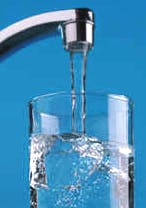A recently discovered disinfection byproduct (DBP) found in U.S. drinking water treated with chloramines is the most toxic ever found, says a scientist at the University of Illinois at Urbana-Champaign who tested samples on mammalian cells.
The discovery raises health-related questions regarding an EPA plan to encourage all U.S. water-treatment facilities to adopt chlorine alternatives, said Michael J. Plewa, a genetic toxicologist in the university's department of crop sciences.
"This research says that when you go to alternatives, you may be opening a Pandora's box of new DBPs, and these unregulated DBPs may be much more toxic, by orders of magnitude, than the regulated ones we are trying to avoid," he warned.
Plewa and colleagues, three of them with the EPA, report on the structure and toxicity of five iodoacids found in chloramines-treated water in Corpus Christi, Texas, in this month's issue of the journal Environmental Science & Technology.
The findings, which appeared online in advance, already have prompted a call from the National Rural Water Association for a delay of EPA's Stage 2 rule aimed at reducing the amount of previously identified toxic DBPs occurring in chlorine-treated water.
"The iodoacids may be the most toxic family of DBPs to date," Plewa said. One of the five detailed in the study, iodoacetic acid, is the most toxic and DNA-damaging to mammalian cells in tests of known DBPs, he added.
"These iodoacetic acids raise new levels of concerns," he explained. "Not only do they represent a potential danger because of all the water consumed on a daily basis, water is recycled back into the environment. What are the consequences? The goal of Stage 2 is to reduce DBPs, particularly the ones that fall under EPA regulations, and especially the ones that have been structurally identified and found to be toxic."
The use of chloramines, a combination of chlorine and ammonia, is one of three alternatives to chlorine disinfectant, which has been used for more than 100 years. Other alternatives are chlorine-dioxide and ozone.
All treatments react to compounds present in a drinking water source, resulting in a variety of chemical disinfectant byproducts.
Approximately 600 DBPs have been identified since 1974. Scientists believe they've identified about 50 percent of all DBPs that occur in chlorine-treated water, but only 17 percent of those occurring in chloramines-treated water, 28 percent in water treated with chlorine-dioxide, and just 8 percent in ozone-treated water.
Of all structurally identified DBPs, the quantitative toxicity is known for about 30 percent.
Some DBPs in chlorine-treated water have been found to raise the risks of various cancers, as well as birth and developmental defects.
Corpus Christi's water supply has high levels of bromide and iodide because of the chemical makeup of the ancient seabed under the water source. Local water sources lead to different DBPs.
Whether the types of iodoacids found in Corpus Christi's treated water might be simply a reflection of local conditions, and thus a rare occurrence, is not known.
The DBPs in Corpus Christi's water were found as part of an EPA national occurrence survey of selected public water-treatment plants done in 2002. The survey reported on the presence of 50 high-priority DBPs based on their carcinogenic potential. The report, published in April, also identified 28 new DBPs.
Because so many new DBPs are being found in drinking water, Plewa said, two basic questions should be asked: How many are out there? And how many new ones will be formed as chlorine treatments are replaced with alternative methods?
Co-authors with Plewa on the EPA-funded study were Elizabeth D. Wagner, a scientist in the department of crop sciences at Illinois; Susan D. Richardson and Alfred D. Thruston Jr. of the EPA's National Exposure Research Laboratory; Yin-Tak Woo of the EPA's Risk Assessment Division, Office of Pollution Prevention and Toxics; and A. Bruce McKague of the CanSyn Chemical Corp. of Toronto.
Source: University of Illinois at Urbana-Champaign


